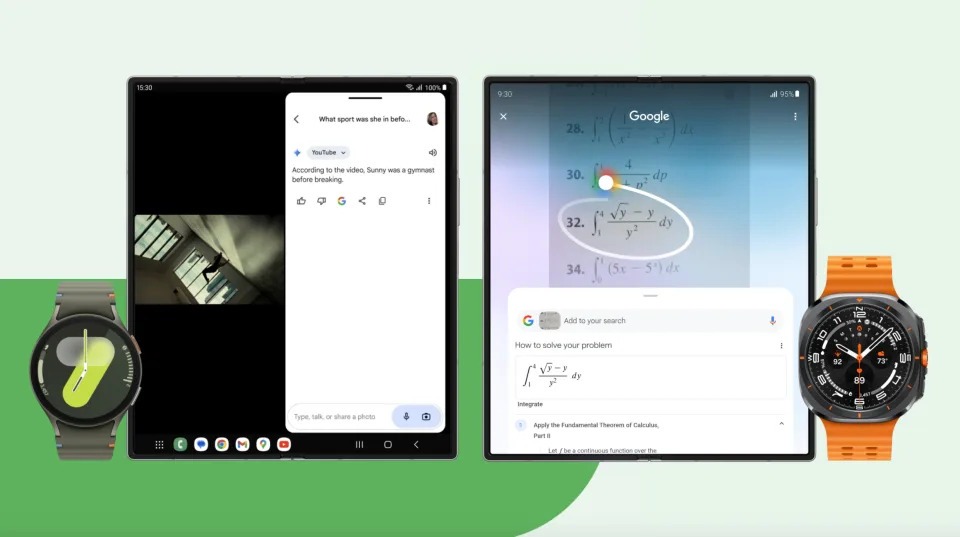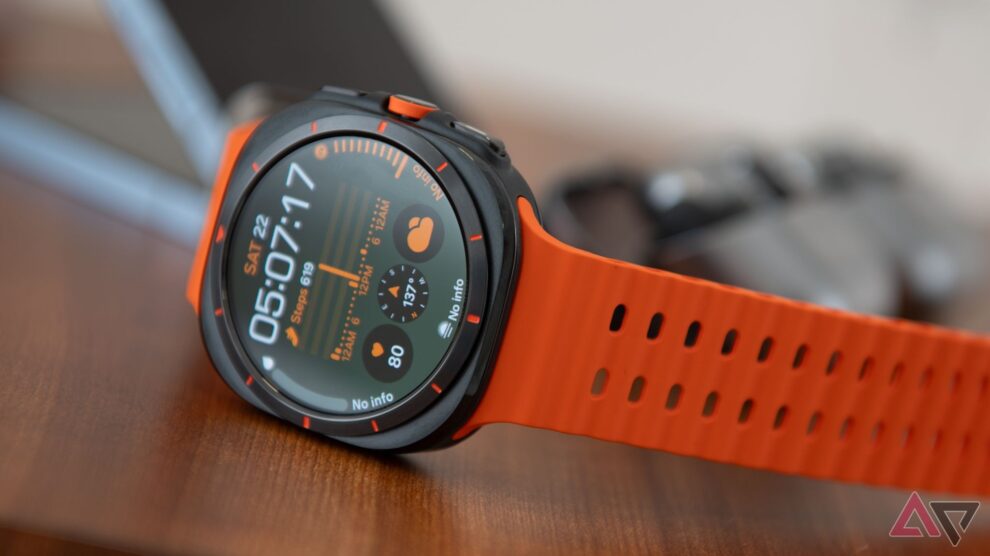
Wear OS 5: Unpacking the Upgrades
Performance and Efficiency
- Battery Life Improvements: Enhanced efficiency could address one of the primary pain points for smartwatch users – frequent charging.
- Smoother User Experience: Improved performance likely means more responsive apps and smoother animations, enhancing overall usability.
- Potential for More Complex Apps: Better performance might enable more sophisticated applications on smartwatches.
Interface Enhancements
- Grid-Based App Launcher: This change could improve app discoverability and organization on the small watch screen.
- Watch Face Customization: More options for personalization can increase user engagement and satisfaction.
Health and Fitness Features
- Potential New Tracking Capabilities: While specifics are unclear, improvements in health monitoring are a logical progression for smartwatch development.
- Integration with Google Fit: We might see tighter integration between Wear OS 5 and Google’s health platform.
Galaxy Watch 7 and Ultra: Samsung’s Latest Innovations
Exynos W1000 Chipset
- Performance Boost: This new chipset likely enables the efficiency improvements mentioned, potentially allowing for more features without sacrificing battery life.
- Competitive Edge: Custom silicon could give Samsung an advantage over other Wear OS manufacturers.
Gesture Controls on Galaxy Watch 7
- Enhanced Usability: Gesture controls could make navigation easier, especially for quick actions or when hands are occupied.
- Accessibility Improvements: This feature might make the watch more usable for individuals with certain physical limitations.
Market Implications
For Samsung
- Market Leadership: Being first with Wear OS 5 reinforces Samsung’s position as a leader in Android-compatible smartwatches.
- Ecosystem Strengthening: Improved integration with Android phones could make the Galaxy Watch more appealing to Samsung smartphone users.
For the Wear OS Platform
-
- Platform Revitalization: Significant improvements in Wear OS 5 could attract more manufacturers to the platform.
- App Ecosystem Growth: Better performance might encourage developers to create more advanced apps for Wear OS.
For Competitors
- Pressure on Apple: Improvements in Wear OS watches could put pressure on Apple to innovate further with watchOS.
- Challenges for Other Android Smartwatch Makers: Samsung’s early access to Wear OS 5 might give them a temporary advantage over other manufacturers.
Potential Challenges and Considerations
- Feature Parity Across Devices: Ensuring all Wear OS 5 features work consistently across different manufacturers’ hardware could be challenging.
- Battery Life Realities: While efficiency improvements are promised, real-world battery life will be crucial for user satisfaction.
- Learning Curve: New interface elements and gesture controls may require some adjustment for users.
The Future of Wearables
Samsung’s launch of Wear OS 5 devices points to several potential trends in wearable technology:
- Increased Focus on Health: Smartwatches are likely to become even more central to personal health monitoring.
- AI Integration: Future updates might incorporate more AI features for personalized experiences and health insights.
- Ecosystem Integration: Tighter integration between smartwatches, phones, and other smart devices is probable.
- Form Factor Evolution: As technology improves, we might see experimentation with new smartwatch designs and capabilities.
Conclusion: A Promising Step Forward
The launch of the Samsung Galaxy Watch 7 and Ultra with Wear OS 5 represents a significant milestone in smartwatch evolution. While many specifics about the new operating system remain to be seen, the promised improvements in performance, battery life, and user interface are encouraging signs for the future of wearable technology.
As more details emerge and users get hands-on experience with these devices, we’ll gain a clearer picture of how Wear OS 5 and Samsung’s latest hardware innovations stack up against expectations and competitors. This launch sets the stage for an exciting period in the smartwatch market, with potential ripple effects across the entire wearable technology landscape.
For consumers, particularly those in the Android ecosystem, these new watches offer the promise of a more refined, capable, and potentially more health-focused smartwatch experience. As always, the true test will be in real-world usage and how well these devices integrate into users’ daily lives.










Add Comment